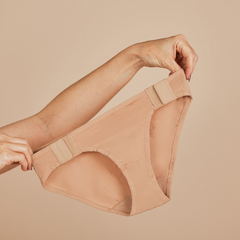Tennis elbow – it's not just a term athletes throw around, it can be an uncomfortable and sometimes long-lasting injury.
If you're facing that pain on the outer side of your elbow, you're likely wondering if it's just a passing phase or something you'll have to wrestle with forever.
What Is Tennis Elbow?

Tennis elbow, (medically known as lateral epicondylitis), is a common condition that causes pain and tenderness on the outer part of the elbow. It's often caused by overuse of the forearm muscles and tendons, resulting in small tears and inflammation.
Do Non-Athletes Get Tennis Elbow?
In short, yes.
Tennis elbow is something that develops over time, mainly caused by repetitive actions like gripping, lifting, or (perhaps unsurprisingly) swinging a tennis racket. If you're into activities that strain those forearm muscles and tendons, you could easily end up with the characteristic elbow pain.
But what can be done to help?
Will Tennis Elbow Go Away On Its Own?
Unfortunately the answer to this question isn’t always simple. If your tennis elbow is on the milder side, there's definitely hope. Rest, a bit of ice, and steering clear of activities that aggravate it might just do the trick. Catching the condition early and giving those activities a break could mean you can avoid more extreme treatments.
Some cases of tennis elbow require injections to help manage inflammation and pain. Some healthcare providers will try to avoid steroid based injections because of how varied side effects can be.
Sometimes, in more extreme cases, tennis elbow can require surgery. The aim is to remove the problem tissue and hopefully alleviate some of the discomfort.
The severity of your injury and intensity of your pain can dramatically alter your treatment plan. If you are in a lot of discomfort or are finding everyday tasks to be more challenging than usual you should speak to a healthcare professional.
How To Best Cope With Tennis Elbow

Play It Cool: Don't underestimate the power of ice and plenty of rest when it comes to treating tennis elbow. Applying ice and using a support or brace to give your tendons a break can be a game-changer when it comes to recovery. Over-the-counter pain relief can also be valuable allies in taming inflammation and fighting discomfort.
Physical Therapy: What else can you do if rest isn’t really helping your tennis elbow to go away? This is the point where the pros come in. Physical therapists can introduce you to exercises that stretch and strengthen your forearm muscles, helping your body to better recover. Here are some tips for going to physical therapy.
Ergonomic Magic: Remember that pesky repetitive motion that caused your tennis elbow? Little tweaks to your technique or using equipment that treats your tendons with kindness might make all the difference. There are ergonomic options and alternatives that will help you to avoid the problem area. While not exactly the same, products for Ehlers Danlos Syndrome can be helpful since people with EDS also have challenges with their tissue, ligaments, and tendons.
Make Reasonable Adjustments: Tennis elbow and its associated pain can make some everyday tasks really uncomfortable. What would have taken five seconds before can be impossible with the pain and limited mobility that often comes with this injury. This is where occupational therapy can be helpful. Occupational therapists are experts at adaptive every day situations to suit a person's range of motion.
One of our top recommendations for women who want to avoid tennis elbow pain is to change out a traditional bra for a front fastening alternative that can be put on with one hand. When you are experiencing shooting pain in your elbow, it’s best not to reach for and try to fasten traditional clasps as this can aggravate your injury. Adaptive clothing is designed to help those with chronic pain and limited mobility to better cope.
Learn more about the adaptive bra that is perfect for avoiding tennis elbow strains.




